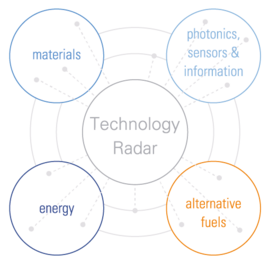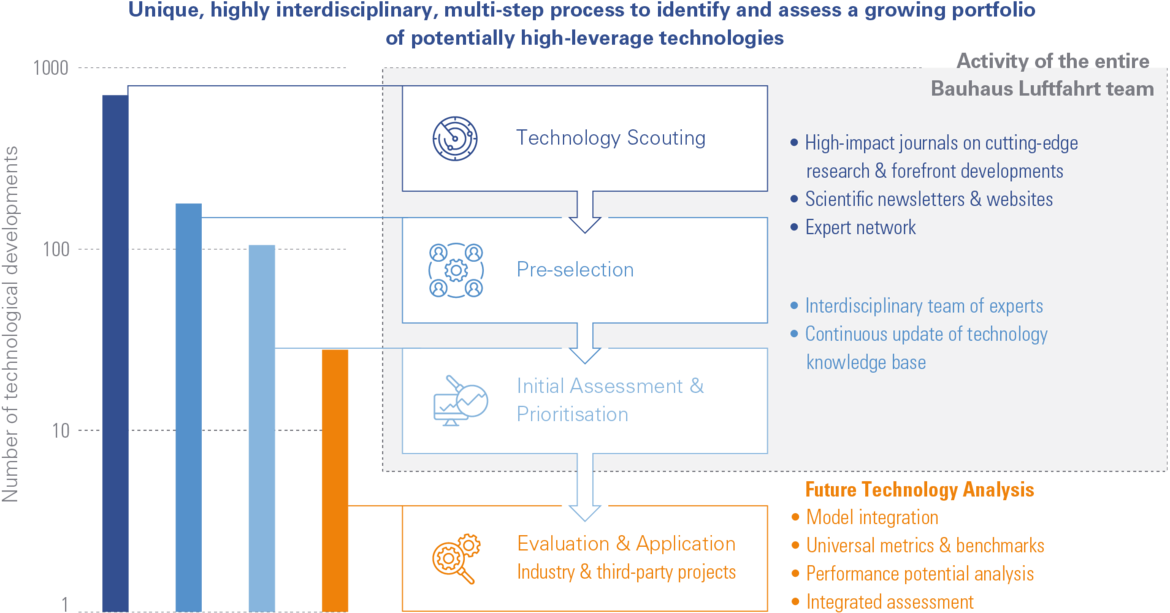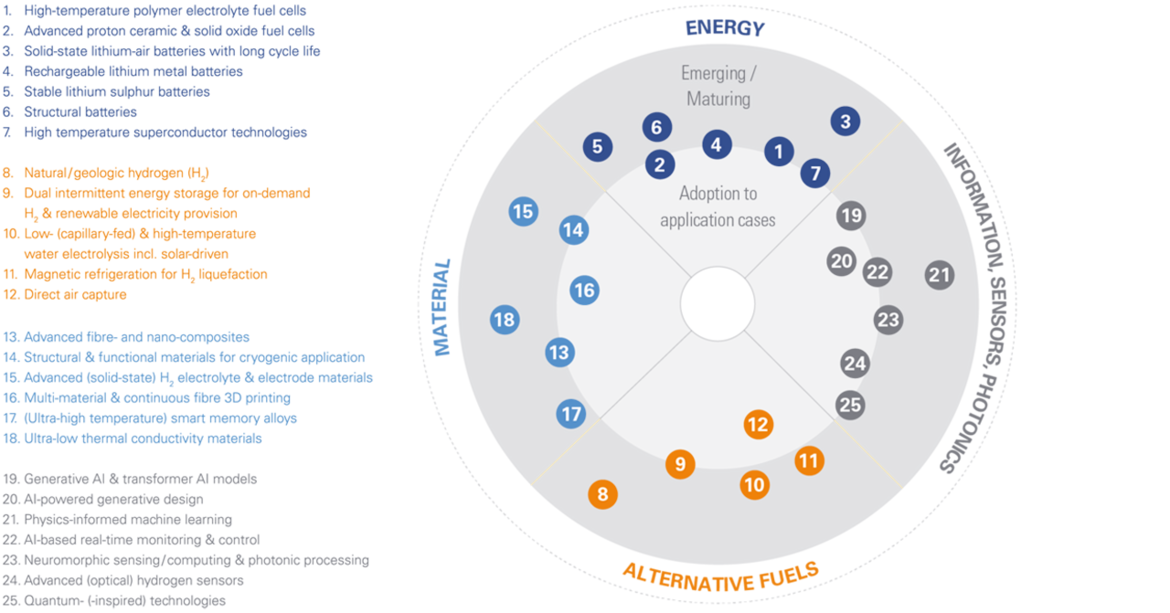The push for climate-neutral aviation and digitalisation benefits emphasises the need for radical innovation. Early detection of research breakthroughs for renewable energy transition and efficiency improvement, alongside a quantitative assessment of innovation potentials, is crucial for setting strategic direction. As a core Bauhaus Luftfahrt competence, the entire team contributes towards these goals in an interdisciplinary multi-step process.

On the radar are key advances for high-performance hydrogen fuel cells with simplified balance of plant as well as essential developments in solid-state energy conversion and storage technologies. Moreover, progress in high-temperature superconductor technology with liquid hydrogen (LH2) cooling are “radar signals” with high relevance towards realising highpower electric propulsion systems, even in larger aircraft. Similarly, advances in fibre-composite and sensor technology are key for designing lightweight, leak-tight LH2 tanks.
Drivers of enhanced performance-to-weight ratio and maintainability of components, structures and energy devices like heat exchangers include optimised material and artificial intelligence (AI)-powered generative design, often with function integration, complemented by advanced (additive) manufacturing and in-situ quality control.
Emerging technologies for intermittent energy storage and the scalable, efficient supply of LH2 or synthetic fuels are also on the radar.
Further, weak signals for disruptive potentials are detected for generative AI, transformers and physics-informed machine learning, notably for contrail-avoiding aircraft rerouting to reduce climate impact.
Detailed analyses reveal the significant potential of detected advances in LH2 technology and AI across the value chain – as a basis for integrated system studies.
Interdisciplinary technology scouting and analysis
The interdisciplinary approach has identified over 700 technology advances. A multi-step selection and the use of proven analysis methods followed to uncover future-proof scientific insights into long-term innovation potentials for aviation, guiding informed decisions.


